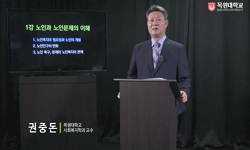.
http://chineseinput.net/에서 pinyin(병음)방식으로 중국어를 변환할 수 있습니다.
변환된 중국어를 복사하여 사용하시면 됩니다.
- 中文 을 입력하시려면 zhongwen을 입력하시고 space를누르시면됩니다.
- 北京 을 입력하시려면 beijing을 입력하시고 space를 누르시면 됩니다.

의사결정나무분석에 의한 노인의 연령집단별 노쇠 결정요인 탐색 = Exploring the Determinants of Frailty in Older Adults by Age Group Using Decision Tree Analysis
한글로보기https://www.riss.kr/link?id=A109684274
- 저자
- 발행기관
- 학술지명
- 권호사항
-
발행연도
2025
-
작성언어
Korean
- 주제어
-
등재정보
KCI등재
-
자료형태
학술저널
- 발행기관 URL
-
수록면
95-110(16쪽)
- 제공처
-
0
상세조회 -
0
다운로드
부가정보
다국어 초록 (Multilingual Abstract)
Purpose: This study aimed to identify frailty determinants by age group. Methods: The participants were 9,955 older adults from the 2023 National Survey of the Living Conditions of Older Koreans. They were divided into three groups: young old (65~74 y...
Purpose: This study aimed to identify frailty determinants by age group. Methods: The participants were 9,955 older adults from the 2023 National Survey of the Living Conditions of Older Koreans. They were divided into three groups: young old (65~74 years), advanced old (75~84 years), and very advanced old (85+ years). The data were analyzed using IBM SPSS Statistics 29.0 and a decision tree. Results: Frailty prevalence increased with age: 2.0% in the young old, 7.0% in the advanced old, and 11.3% in the very advanced old group. Major predictors differed by group: activities of daily living in the young old, instrumental activities of daily living in the advanced old, and depression in the very advanced old. The primary causes of frailty gradually changed as people aged, moving from physical to psychological and social influences. Conclusion: These findings suggest the need for age-specific frailty management programs. Programs should emphasize physical activity for the young old and socio-psychological support for the very advanced old to support healthy aging.
동일학술지(권/호) 다른 논문
-
중장년 근로자를 위한 생태학적 모델 기반 심뇌혈관질환 예방 프로그램 개발 및 효과
- 한국보건간호학회
- 임유미
- 2025
- KCI등재
-
보건진료전담공무원의 재난관리인식, 재난대비 태도가 재난준비도에 미치는 영향
- 한국보건간호학회
- 서경선
- 2025
- KCI등재
-
응급실 간호사의 간호전문직관과 중증도 분류 역량이 재난간호역량에 미치는 영향
- 한국보건간호학회
- 임효진
- 2025
- KCI등재
-
지역사회 거주 지원을 위한 간호사 주도형 지역통합방문간호센터 모형 개발 연구
- 한국보건간호학회
- 한영란
- 2025
- KCI등재




 DBpia
DBpia






